It’s a Small World! A guest post by Betty Culley
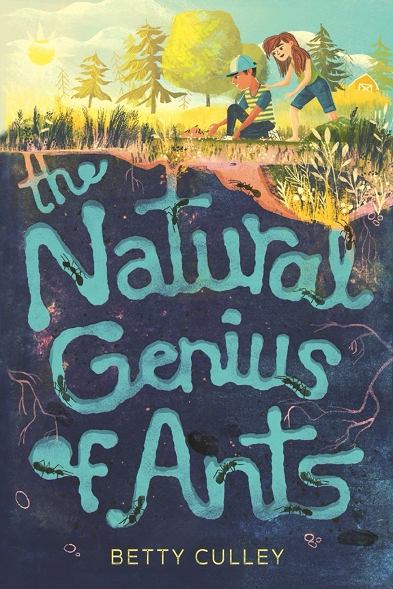
Can a summer ant farm be the means for a family to heal?
I started my second middle grade novel thinking about the consequences of making the worst mistake and how it would affect a family, especially a child in that family. I also considered what we teach our children about forgiveness, for themselves and others, because in the end we are human, and we are all bound to make mistakes.
In THE NATURAL GENIUS OF ANTS, Harvard Corson has a huge task in front of him and only a short summer to accomplish it—trying to get his doctor father to forgive himself for a very big mistake that cost a baby her life. Not only that, but Harvard also needs to keep an ant colony alive!
ADVERTISEMENT
ADVERTISEMENT
The summer after the mistake, Harvard’s Dad takes him and his little brother Roger back to the place where he grew up—out in the country in his hometown of Kettle Hole, Maine. Their ant farm project is the first thing Harvard’s dad is excited about in a long time. But when the live western harvester ants are dead on arrival, Harvard, in an attempt to shield his father from the truth, comes up with the idea of substituting ants he sees crawling around the house.
When Harvard takes on the responsibility of caring for an ant farm, it helps him understand the burden his father carries. It sparked my imagination to think about living creatures as small and seemingly insignificant (of course, they are anything but) as ants helping to heal a family.
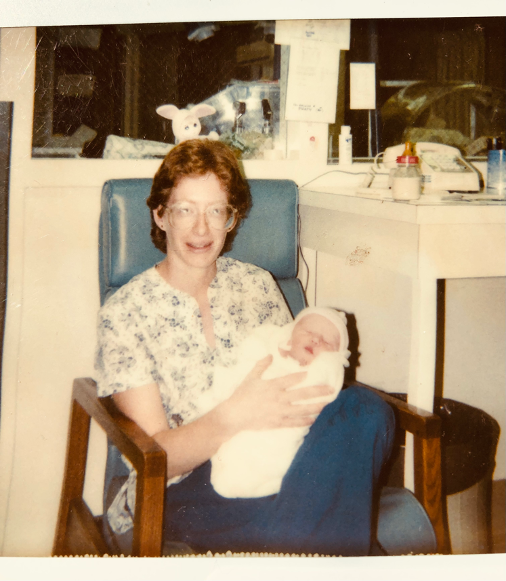
I’m not a doctor like Harvard’s dad, but I did care for small babies like he did. I’m an RN who’s worked as a pediatric home hospice nurse, as well as a labor and delivery and obstetrics nurse. This is me, in the nursery in a small hospital in Maine, holding a newborn. I absolutely loved my work, and never made a mistake that hurt someone, but the fear of making mistakes was always with me.

What better book research is there than the hands-on kind?
This was the first of many ant farms I kept during the writing of the novel, including caring for a queen ant and her eggs. I observed ants eating, digging tunnels, disposing of their ‘trash’, and studied how they moved, communicated, and worked together for the good of the colony.
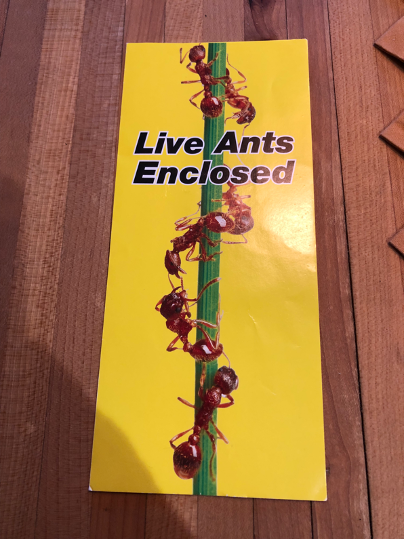
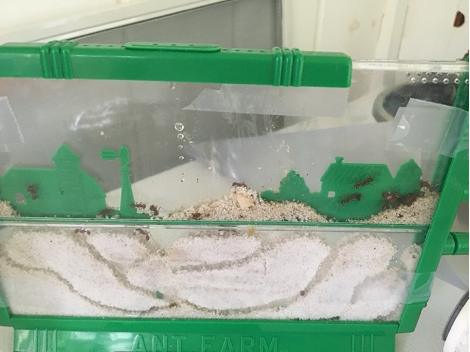
If you look closely at the photo, you can see a piece of apple partially covered over with sand. I discovered that when I fed the western harvester ants, one of the first things they did was to cover their food! It was a painstaking process, where they carried grains of sand in their mouths and deposited them over the food. And as you can see, they are also amazing tunnel makers!
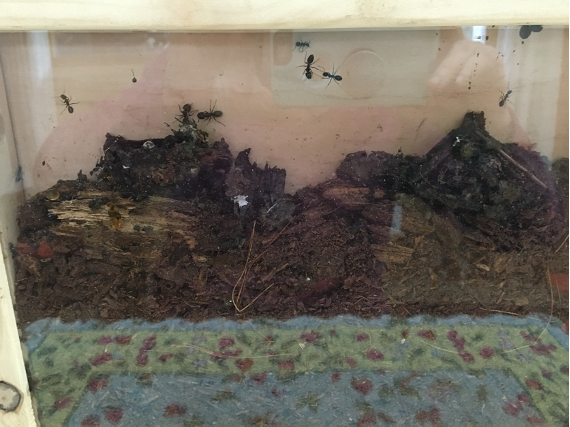
Harvard and his little brother Roger help their father build their own home-made ant farm. My second ant farm was also made by hand. Like Harvard and his new friend Nevaeh, I filled it with dirt, bark, and moss from right outside my home in rural Maine and populated it with ants I found nearby. The ant farm was great inspiration as I worked on the book and a lot of my first-hand observations ended up in the novel. For instance, I also had to figure out what carpenter ants liked to eat and how much to feed them.
There were challenges, too, in caring for living creatures, even those as small as ants, something that Harvard, Nevaeh, and I all learned. But there were also revelations about our similarities as beings that inhabit this earth, trying to find and keep a place we call home. In the end, I was surprised to find more in common with these six-legged insects than I ever expected.
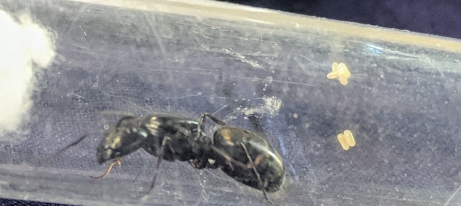
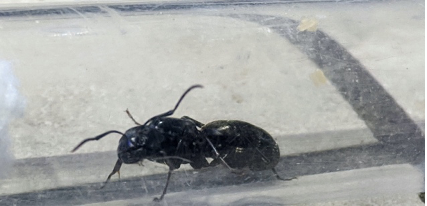
In the book, Harvard and his friend Nevaeh realize one of the ants they put in the ant farm is a carpenter ant queen and she is laying eggs!
Meet the beautiful carpenter queen ant (Camponotus pennsylvanicus) I raised. For ecological reasons, queen ants can’t be shipped, but I was able to get her locally through GAN, the global ant network project. You can see some of her larvae, which later hatched out! Watching the queen care for her eggs and seeing their metamorphosis into new worker ants was definitely a highlight of my research. I eventually released her and her offspring into the wild.
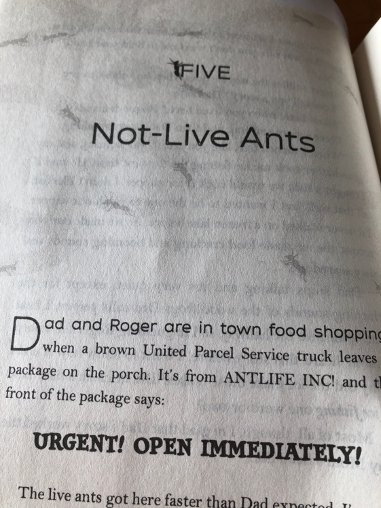
One of my favorite parts of the book design is how the artist incorporated ants and ant tunnels into the chapter beginnings!

ADVERTISEMENT
ADVERTISEMENT
Despite the seriousness of some of the issues, I had the most fun writing this book. I loved being in Harvard’s world and getting to know him and his big personality, his little brother Roger, and his poet friend Nevaeh.
And when I’m not reading about ants, observing ants, or wearing my ant sneakers, I’m usually at work on my next book.
Meet the author

Betty Culley’s debut novel in verse Three Things I Know Are True, was a Kids’ Indie Next List Top Ten Pick, an ALA-YALSA Best Fiction for Young Adults Nominee, and the 2021 Maine Literary Book Award Winner for Young People’s Literature. Her first middle-grade novel Down to Earth was inspired by her fascination with meteorites, voyagers from another place and time. She’s an RN who worked as an obstetrics nurse and as a pediatric home hospice nurse. She lives in central Maine, where the rivers run through the small towns. Visit her online at www.bettyculley.com.
https://www.instagram.com/bettyculley/
https://www.facebook.com/bettyculleywrites
About The Natural Genius of Ants
summer ant farm grows into a learning experience for the entire family in this lyrical coming-of-age story from the award-winning author of Down to Earth.
“Endearingly executed, this gentle tale will see readers applauding as they reach the end.” –Booklist, Starred Review
Harvard is used to his father coming home from the hospital and telling him about all the babies he helped. But since he made the mistake at work, Dad has been quieter than usual. And now he is taking Harvard and his little brother, Roger, to Kettle Hole, Maine, for the summer. Harvard hopes this trip isn’t another mistake.
In the small town where he grew up, Dad seems more himself. Especially once the family decides to start an ant farm—just like Dad had as a kid! But when the mail-order ants are D.O.A., Harvard doesn’t want Dad to experience any more sadness. Luckily, his new friend Neveah has the brilliant idea to use the ants crawling around the kitchen instead. But these insects don’t come with directions. So the kids have a lot to learn—about the ants, each other, and how to forgive ourselves when things go wrong.
ISBN-13: 9780593175774
Publisher: Random House Children’s Books
Publication date: 05/10/2022
Age Range: 8 – 12 Years
Filed under: Guest Post
About Amanda MacGregor
Amanda MacGregor works in an elementary library, loves dogs, and can be found on BlueSky at @amandamacgregor.bsky.social.
ADVERTISEMENT
ADVERTISEMENT
SLJ Blog Network
Should I make it holographic? Let’s make it holographic: a JUST ONE WAVE preorder gift for you
Review of the Day: Every Monday Mabel by Jashar Awan
Betty and Veronica Jumbo Comics Digest #334 | Preview
Fifteen early Mock Newbery 2026 Contenders
When Book Bans are a Form of Discrimination, What is the Path to Justice?
ADVERTISEMENT







